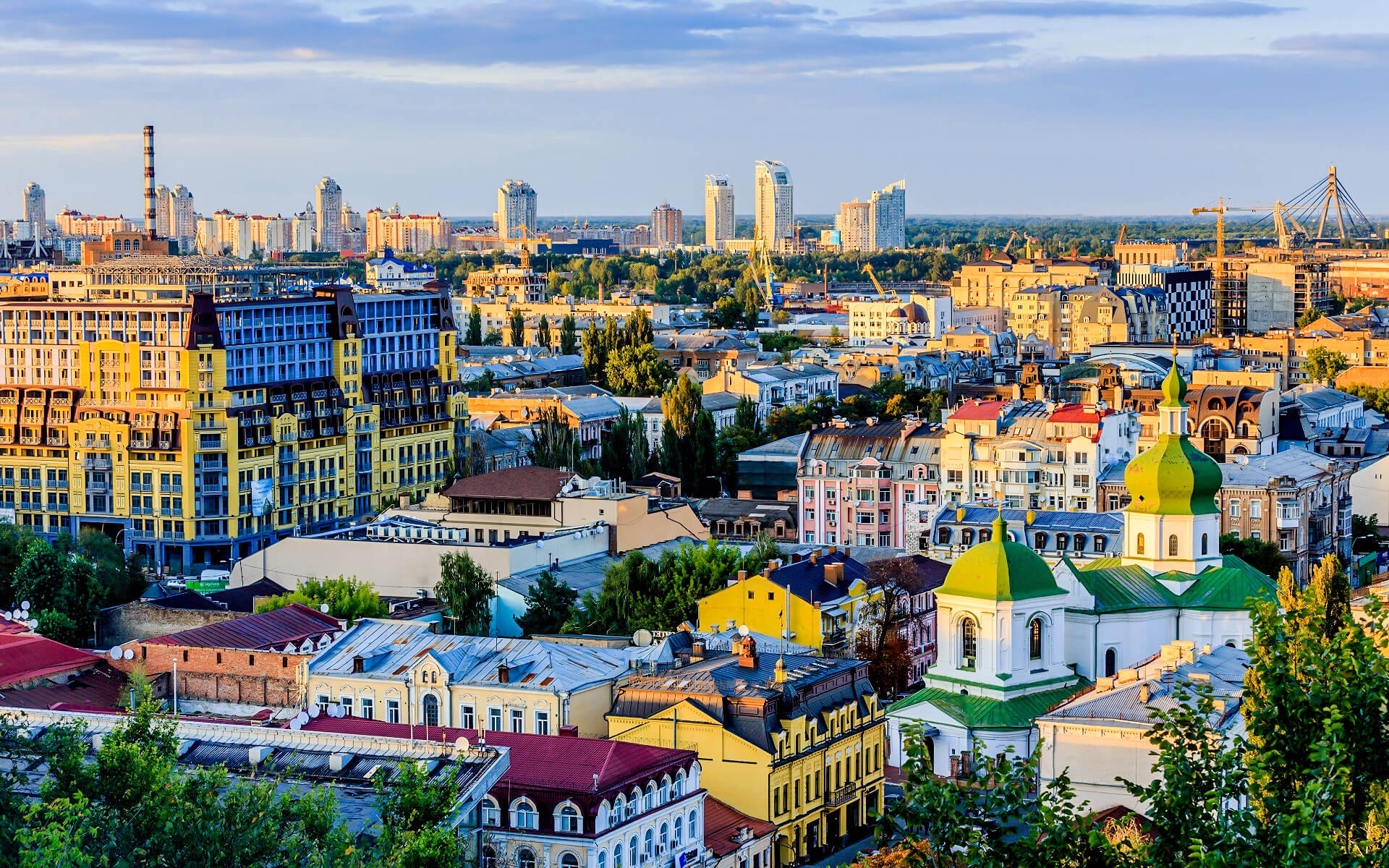Kiev is Ukraine’s capital and biggest city, situated on the Dnieper River in the country’s north center region. The population was 2,887,974 in July 2015 (though greater estimates have been mentioned in the news), making Kiev the eighth most populated city in Europe.
Kiev is an important Eastern European economic, scientific, educational, and cultural center. It is home to several high-tech enterprises, higher education institutions, and world-renowned historical sites. The city boasts a well-developed infrastructure and public transportation system, including the Kiev Metro.
The name of the city is claimed to be derived from the name of Kyi, one of the city’s four mythical founders. Kiev, one of the oldest towns in Eastern Europe, has experienced periods of tremendous prominence and relative obscurity throughout its history. As early as the fifth century, the city was most likely a commercial center. Kiev was a Slavic hamlet on the main trade route between Scandinavia and Constantinople until it was conquered by the Varangians (Vikings) in the mid-9th century. The city became the capital of the Kievan Rus’, the first East Slavic kingdom, under Varangian domination. When the city was completely devastated during the Mongol invasion in 1240, it lost much of its power for years to come. It was a minor provincial capital on the fringes of regions ruled by its strong neighbors, first the Grand Duchy of Lithuania, then Poland and Russia.
During the Russian Empire’s Industrial Revolution in the late nineteenth century, the city developed once again. Kiev became the capital of the Ukrainian National Republic when it achieved independence from the Russian Empire in 1917. Kiev was an important headquarters of the Armed Forces of South Russia and was controlled by the White Army beginning in 1919. Kiev was a city of the Ukrainian Soviet Socialist Republic, which was declared by the Red Army in 1921, and its capital since 1934. During World War II, the city suffered major damage again, but swiftly rebounded in the postwar years, remaining the Soviet Union’s third biggest city.
Following the fall of the Soviet Union and Ukrainian independence in 1991, Kiev remained the nation’s capital, with a continuous inflow of ethnic Ukrainians from other parts of the country.
Kiev has been Ukraine’s biggest and wealthiest city during the country’s transition to a market economy and elected democracy. Following the fall of the Soviet Union, Kiev’s armament-dependent industrial production collapsed, negatively impacting research and technology. However, new economic sectors such as services and finance have aided Kiev’s wage and investment growth, as well as providing ongoing funds for the construction of housing and urban infrastructure. Kiev emerged as Ukraine’s most pro-Western area, with parties favoring closer union with the European Union dominating elections.


